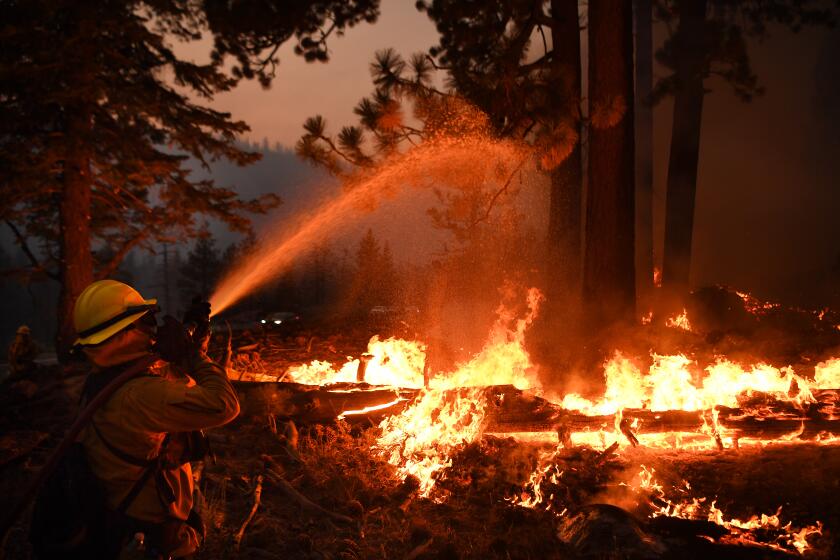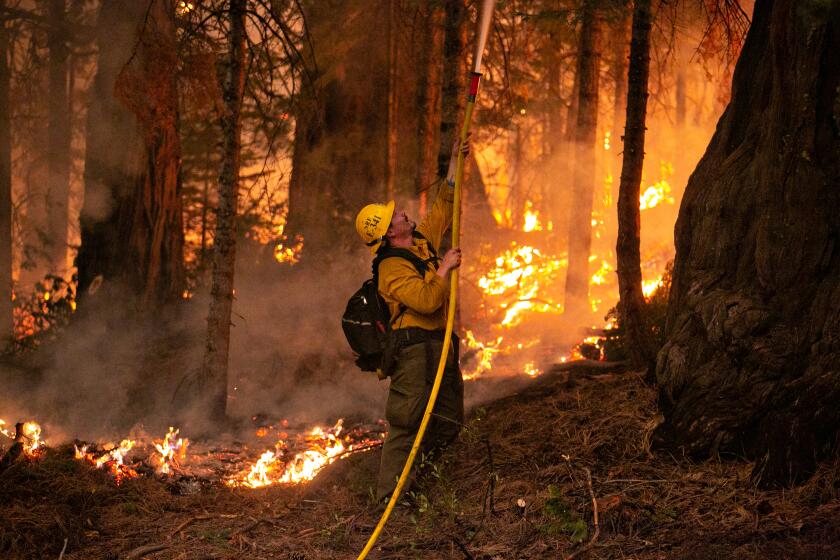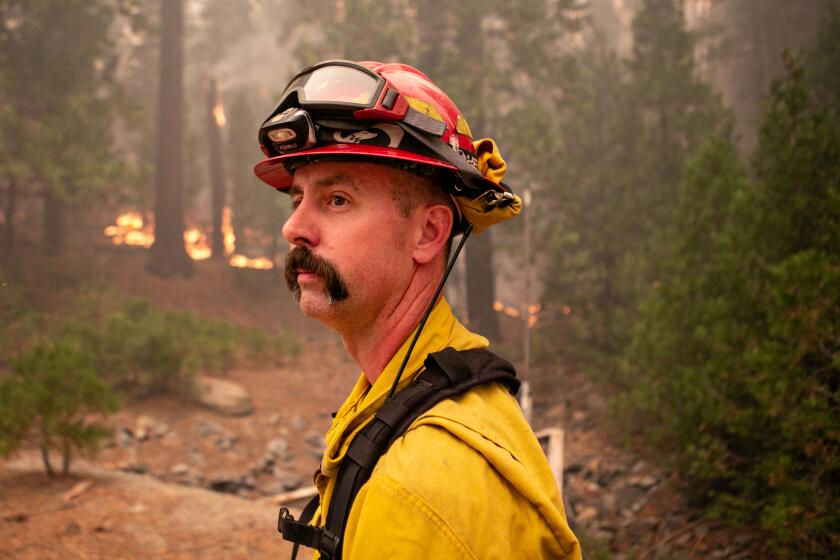Caldor fire rages toward Lake Tahoe: Next 48 hours will be crucial

The Caldor fire is closing in on the Lake Tahoe Basin and threatening the popular resort area.
- Share via
SOUTH LAKE TAHOE, Calif. — The Caldor fire is closing in on the Lake Tahoe Basin and threatening the popular resort area.
Officials say the next two days will be crucial as powerful winds push the fire. Here is a breakdown of what we know:
Thousands rushed to leave South Lake Tahoe as the resort city came under an evacuation order due to the Caldor fire.
The fire’s path
Although there is still activity on the western perimeter, the majority of recent growth in the Caldor fire has been on its northeastern edge, near the towns of Strawberry and Kyburz and in the direction of the Lake Tahoe Basin.
Crews on Sunday were working hard and fast to get ahead of the shift, but they were met with increasingly erratic conditions and extreme fire behavior. Fire officials had hoped a granite ridge between the fire and the Lake Tahoe Basin would be the best opportunity to get ahead of the blaze.
Evacuations are ordered as the Caldor fire marches toward Lake Tahoe. Officials say fire dangers heightened this weekend due to winds and high temperatures.
Jason Hunter, Caldor fire information officer, said Monday the fire was still holding to the west of that ridge but worried that strong winds just beginning to pick up could generate spot fires and unpredictable behavior. In the last few days, the fire has been spotting — or producing sparks that are carried by the wind and start new fires — about one-half mile ahead of itself, but crews are expecting that distance to expand to more than a mile due to wind, he said.
“Our significant concern is that spotting,” he said, with “the embers being blown from up at the ridge top landing somewhere down in the valley and taking hold.”
The loss of ground
Strong winds fueled spot fires and flareups that saw gains slip away by Monday morning, as containment on the 177,260-acre fire dropped from 19% Sunday morning back down to 14%.
“A couple of days ago, I really felt we were turning a corner with it,” operations section chief Eric Schwab said Sunday, noting that the fire had been creeping eastward at a pace of about half a mile each day.
But on Sunday, it “moved about 2½ miles on us,” he said, “with no sign that it’s starting to slow down.”
The threat
More than 20,000 structures are threatened by the fire, including many in the populous Lake Tahoe Basin, officials said.
The area is typically packed with summertime revelers at this time of year, but evacuations and thick, noxious smoke have turned it into a ghost town.
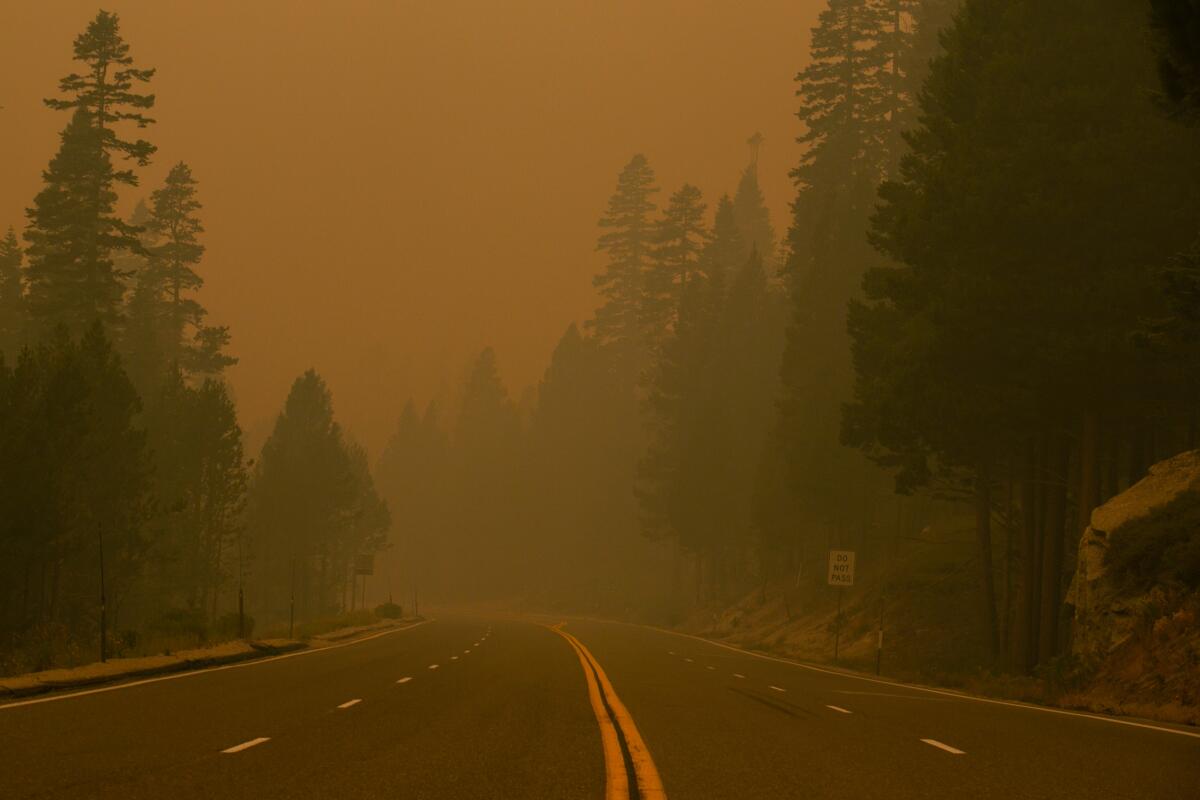
The extreme conditions
The National Weather Service issued red flag warnings indicating gusty wind conditions in the area through 11 p.m. Tuesday.
“We are expecting a big change in the weather pattern,” incident meteorologist Jim Dudley said during a briefing Saturday evening. “What will happen is that the winds that have been affecting the fire on the ground level … are going to be aided by southwesterly winds aloft.”
Officials said the winds would meet with hot, dry weather to create elevated fire conditions. Gusts on Monday were expected to be as strong as 35 mph.
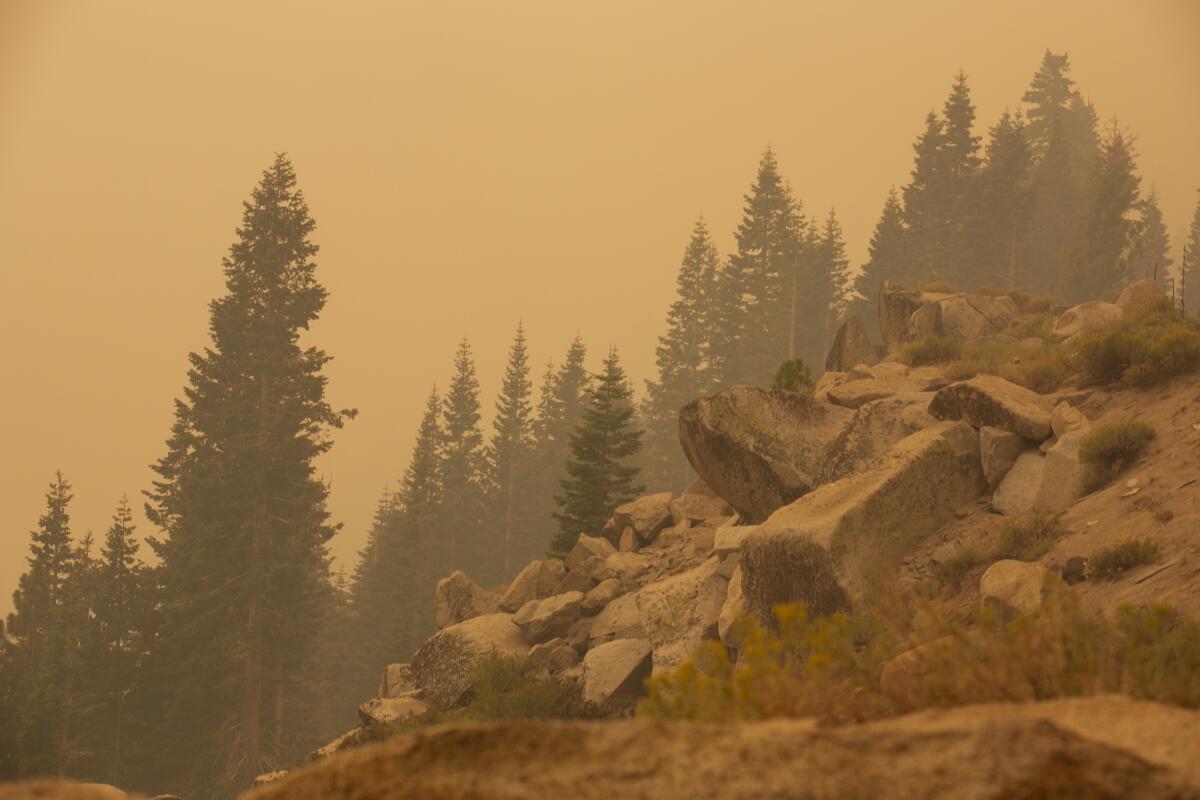
The fire’s behavior
The fire was spotting at distances as far as three-fourths of a mile, and the probability of those spots creating new fires is 90%, according to fire behavior analyst Steven Volmer.
In the days to come, that probability will increase to 95%.
One challenge is the area’s topography, which includes deep drainages and canyons that can act as funnels for the wind and flames.
On the front lines of battle to keep Caldor fire from hitting Lake Tahoe
The evacuation order
A mandatory evacuation order was issued for communities just south of South Lake Tahoe, including nearly all the Lake Tahoe Basin in El Dorado County, from the California-Nevada state line on the lake’s southern end to Tahoma on its western shore.
Intense smoke from the fire brought terrible air quality to the region, and that prompted many to leave last week.
More to Read
Sign up for Essential California
The most important California stories and recommendations in your inbox every morning.
You may occasionally receive promotional content from the Los Angeles Times.
